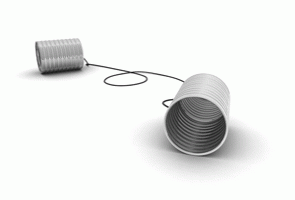Communication is our greatest tool. As a business owner trying to build your company and gain the interest of investors, or even as a promoter of some product or purveyor of some service trying to convert customer prospects, how you communicate what you are doing or what you have to offer shapes the absolute outcome.
Communication is, by definition, the imparting or exchanging of information or news. Think about that for a moment. Really think about it.
More than just knowing or understanding – the communication we receive informs what we think, how we feel, and what we do. And the communication we give informs all those same things for others.
So consider this: How do we learn about and come to understand – and even experience – what happens in the world if we don’t have that information and news?
Communication Outlets Define How We Live
Communication outlets are a vital part of our day-to-day lives. They help us navigate the world by providing us with what we need to know. These days, we sit down at our computers or pick up our tablets or phones. We see what’s happening on the social media sites we use, peruse the list of headlines on our preferred news sites, check out the blogs we regularly follow. We click to on the words that catch our attention or follow the links posted by our most informed friends – the words that caught their attention. We read and we learn. We take what’s happening, apply it to our lives, and decide where to go from there.
The act of circulating information and sharing news has been around for centuries, preceding even the creation of the first known movable type printing technology, which appeared in China in the 1040s. Communication is how civilizations have tracked growth and change, how cultures have memorialized their history.
A Trip Back in Time with Communication
So, today, we take a trip back in time to learn about how communication shaped our world and the people in it. Here’s what happened on Aug.14:
The Oregon Territory was established on Aug. 14, 1846, resolving one of the most important U.S. diplomatic issues of the first half of the 19th century. The territory was originally claimed by Spain, Great Britain, Russia, and America. Conflicts with Spain and Russia were resolved, leaving Britain and the U.S. to come to an agreement on the territory line between the U.S. and Canada. “Fifty-four forty or fight” became the rallying call that would win the presidential election for James K. Polk in 1844, describing the north parallel that the U.S. asserted it had valid claim up to. This small piece of communication has become synonymous with this important period in American expansion.
Japanese Emperor Hirohito surrendered to the Allies on Aug. 14, 1945, signaling the end of World War II. The Japanese forces were drastically diminished after atomic bombs were dropped on Hiroshima and Nagasaki. Very few ships remained intact in the fleet and manufacturing avenues were cut off, disallowing Japan from producing any additional weaponry. When Japan realized that resistance was useless, the nation submitted to the Allies’ stringent terms. The world learned about this momentous event from the headlines of every major newspaper. Splashed across the front of The New York Times was the story of “Japan Surrenders, End of War!” – communicating to U.S. citizens that they could let out a sigh of relief, a cheer for victory.
Communicate with Intention
If we take a look back in history, or even if we just take a look around us, we see how important communication is. We buy into words. We rely on them to help us make decisions.
It can be as small as a political slogan, as full as a current events article, as comprehensive as a custom collateral piece – communication is affecting in every shape and size. And, on that note, every shape and size requires something different.
For example, newsletters are an avenue of engagement with customers and prospects. They inform about a company’s current events and related information for the benefit of its audience – so that those reading the newsletter can feel connected to the products or services they’ve invested in. Press releases are introductions to the world … an audience’s first taste of something new, the impression they get that determines whether or not they want to find out more. Web content is arguably today’s most powerful mode of communication. In a digitally driven world, a website provides the baseline for a brand, serving as the main platform for representing a company to a mass audience.
The takeaway is that communication should never be overlooked or underestimated. It has the power to change anything and to capture everything.
